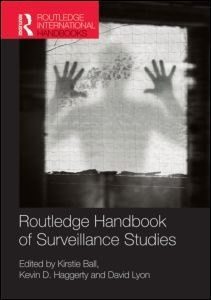LEARN FROM TIBET
BLOG 3 OF 4 ON CHINA’S NEW REGIME OF REWARD AND PUNISHMENT IN TIBET
As China has become richer, punishment and repression are no longer the only options for taming Tibet. The other end of the scale –rewards- are now within the budgetary capacity of local governments in Tibetan areas, long subsidised heavily by the central government.[1] So a newer, broader term has gradually replaced stability maintenance: social maintenance. That in turn has become a step towards social credit rankings. Human Rights Watch explains: “Stability maintenance” (Tibetan: brtan lhing srung skyong བརྟན་ལྷིང་སྲུང་སྐྱོང་།, Chinese: weiwen 维稳, refers to the security measures instituted across the country from 2007 onwards to counter unrest and dissent. Since around 2013, these policies have also often been grouped under a second umbrella term, “social management,” which also refers to measures designed to achieve “stability” but implies the inclusion of measures providing services to the population. Social Management, in Tibetan: spyi tshogs do dam སྤྱི་ཚོགས་དོ་དམ།, In Chinese: shèhuì guǎnlǐ 社会管理 Definition: “Social management” refers to a system of policies, methods, institutions, and attitudes designed to prevent social unrest by improving government provision of social services while at the same time improving government capacity to suppress dissent. It refers particularly to improving the capacity of Party and government organizations both to deliver services and to eliminate dissent, especially in rural townships and villages. These services include poverty relief, employment, and skills training, the mediation of disputes and “social contradictions,” and management of the “floating” or (migrant) population. All branches of government are required to perform social management functions, including those in charge of workplace safety, food safety, emergency management, and so forth.”
The shift now under way, from stability maintenance to social management to social credit entails a shift of perspective. Under stability maintenance there was no doubt whatever who decides what stability is. It is the gaze of the party-state that defines stability, and what constitutes transgression. Under social maintenance, the society to be maintained is local, its development path invested in. Social credit defines the social more broadly, no longer locally. Implicitly basing itself on Confucian universals such as sincerity and trust, it is the whole of Chinese society that is hurt when trust is broken and citizens act insincerely. The feelings of the entire Chinese people are hurt by infractions of mandatory sincerity and trustworthiness; and the party, by definition, embodies the aspirations and values of the Chinese people.
Three top-level design phrases remain in this lexicon we now need to learn from the Tibetans. One is: “Comprehensive Rectification, in Tibetan: phyogs bsdus bcos skyong ཕྱོགས་བསྡུས་བཅོས་སྐྱོང་།, in Chinese: zònghé zhìlǐ 综合治理 Definition: The Chinese term zonghe zhili is usually translated as “comprehensive management,” but, as with “social rectification,” the Tibetan equivalent has the stronger meaning of “ongoing correction,” and so we have rendered it as “comprehensive rectification.” It usually refers to police operations designed to impose or restore order in a community or locality. These operations include police raids, investigations, detentions, prosecutions, closures, or reeducation drives. They can be in response to a particular incident or situation, or because that locality is subject to routine attention in any case. The term is often used to describe stability maintenance work in general.”
The goal now is shifting, from punitive behavioural correction after things have gone wrong, to the hope, with big data, of preventing dissent well before it manifests publicly. Thus a second key phrase is “Preventive Control, in Tibetan: sngon ’gog tshod ’dzin སྔོན་འགོག་ཚོད་འཛིན།, in Chinese: shèhuì zhì’ān fángkòng 社会治安防控 Definition: The full form of this phrase is “preventive control of social stability.” It refers to the construction and development of policing networks to detect and deal with threats to stability before they lead to actual incidents. Usually refers to the grid management system (meaning offices established within each “grid unit” of a town or village) and to “public convenience police posts,” which were set up at road junctions in many Tibetan towns after 2011. It also includes organizing ordinary people to carry out security work by recruiting security teams and organizing citizen patrols in villages, neighborhoods, schools, and workplaces.”
Last is a new top-level design term, a product of the age of big data: “Three-dimensional [Social Stability] Preventive Control System, in Tibetan: langs gzugs can gyi sngon ’gog tshod ’dzin ma lag ལངས་གཟུགས་ཅན་གྱི་སྔོན་འགོག་ཚོད་འཛིན་མ་ལག, in Chinese: lìtǐ huà shèhuì zhì’ān fáng kòng tǐxì 立体化社会治安防控体系 Definition: Refers to a policing system or monitoring network that includes digital surveillance; monitoring at the grassroots level carried out by cadres based in monasteries, villages, and local neighborhoods; and policing done by officials in grid management offices and by appointed representatives in “double-linked household” units. The term emphasizes the integration of multiple information systems.”
Even though very few Han Chinese speak or read Tibetan, these key concepts are now being rolled out across China, from their origin in Tibet. All Chinese need now to learn this lexicon; so too do foreign investors whose businesses are also expected to comply with the honesty/sincerity and trust rating regime. There is much to learn from the Tibetan experience.
Right now, the hundreds of millions of Chinese customers of Alibaba, Baidu and Tencent, much like the worldwide customers of Google, Amazon and Apple, are eagerly giving big corporations tasked with policing their trustworthiness as much personal data as possible. As big data accumulates, and as the computing power to find patterns in it grows, China’s state grows more ambitious. These are early days in the quest to rate and rank each citizen’s social credit score, to reward or punish accordingly. Even the most utopian/dystopian of State Council edicts sets 2020 as the date when the sincerity ratings become fully operation, at the earliest.
DIGITAL DICTATORSHIP
But already, those who have been paying attention express alarm. The Economist magazine calls this a digital dictatorship: “In China the monitoring could result in a digital dystopia. Officials talk of creating a system that by 2020 will “allow the trustworthy to roam everywhere under heaven while making it hard for the discredited to take a single step.” So far, the scheme is only experimental, in about 30 areas. Indeed, attempts to use the system to give the party more muscle are meeting opposition. Official media have reported misgivings about one experiment in which citizens visiting government offices to complain about miscarriages of justice were punished with poor scores. This aims to score not only the financial creditworthiness of citizens, as happens everywhere, but also their social and possibly political behaviour. The early signs are that China is starting on the most ambitious experiment in digital social control in the world. Wholesale surveillance, increasingly of the digital sort, is a central pillar of Chinese communist rule. A system of block-by-block surveillance called “grid management” is being set up in several parts of the country: police and volunteers keep tabs on groups of a few hundred people, supposedly to ensure the rubbish is collected and disputes resolved. It is part of a tradition of self-policing that stretches back to the Song dynasty in the 11th century. At worst, the social-credit project could become a 360-degree digital-surveillance panopticon. But the government is creating the capacity for a long-tentacled regime of social control. Many of the elements are ready: the databases; the digital surveillance; the system of reward and punishment; and the we-know-best paternalism. What remains is to join the pieces together. If and when that is done, China would have the world’s first digital totalitarian state.”
 If we fail to learn from Tibet, we may discover that even in the democratic West, we too now live in a surveillance state, run for the benefit of a surveillance-industrial complex that has a vested interest in scaring us about the enemies within, and without, to enhance the power and profitability of the tutelary state that punishes the untrustworthy and dishonest. A leading historian of China warns that the Chinese model of control of society that many consider to be totalitarian, over time, will be established in democratic countries. Pamela Kyle Crossley said: “the difference is that Chinese society is more prepared for integration of commercial, military and law enforcement data. As a result of tighter Chinese control through intimidation and self-censorship than will control Americans for another couple of decades.”
If we fail to learn from Tibet, we may discover that even in the democratic West, we too now live in a surveillance state, run for the benefit of a surveillance-industrial complex that has a vested interest in scaring us about the enemies within, and without, to enhance the power and profitability of the tutelary state that punishes the untrustworthy and dishonest. A leading historian of China warns that the Chinese model of control of society that many consider to be totalitarian, over time, will be established in democratic countries. Pamela Kyle Crossley said: “the difference is that Chinese society is more prepared for integration of commercial, military and law enforcement data. As a result of tighter Chinese control through intimidation and self-censorship than will control Americans for another couple of decades.”
As surveillance state analyst Ben Hayes puts it: “The power of the private sector to influence government surveillance agendas is embodied in the surveillance-industrial complex. The consolidation of surveillance into one of the dominant organizational paradigms of contemporary governance, economies and societies does not mean that those surveillance mechanisms most closely linked with state power, control and coercion have simply developed in an ad hoc fashion as societies have reoriented themselves around the potentially infinite power of information technology to record, analyze and shape human activity. On the contrary, the surveillance-industrial complex is at the heart of many of the transformations in population control, policing and intelligence gathering.
“The very idea of the surveillance-industrial complex warns of a nexus so entrenched that it promises to deliver ever more pervasive, intrusive and effective surveillance technologies in perpetuity, just as its military counterpart continues to provide ever more high-tech means to “shock-and-awe,” to target and neutralize the enemy.
“Governments and state agencies no longer just respond to crimes, instead they try to pre-empt them by identifying and neutralizing risks before threats to security can be realized. Consequently, policing and criminal justice is now as much about managing and mitigating danger as it is about crime and punishment.
“A new logic of security is supplanting the criminal law as a primary principle from which the use of physical force and other coercive measures can proceed. This trend, which relies implicitly on new and established forms of surveillance, emerged long before the events of 9/11 and was widely anticipated within the literature on risk, policing and actuarial justice. What no-one could have foreseen, however, was the rapid expansion of corresponding executive powers under the so-called “war on terror,” including security detention (often without the prospect of trial), control orders, discretionary expulsion, “rendition” and even the outsourcing of torture, all underpinned by a plethora of public and private blacklists and databases. This has led some to argue that we are now witnessing the emergence of a new “securitarian order” predicated on the globalization of surveillance; a new means of “managing mass society” through the “religion of national security,”
“A holistic dimension to security can also be observed in the construction of new, networked, “interoperable” or “joined-up” security systems (some are going so far as to describe them as “security ecologies”).
“In practical terms this means enhanced cooperation between police, intelligence, military and other government bodies; the exchange of information among myriad public and private bodies and across borders; and the use of a whole range of benign apparatuses for security purposes, from travel records to traffic controls. It appears that as far as surveillance is central to the (re)organization of our late modern societies, “interoperability” is emerging as its ultimate goal: seamlessly integrated, computer-aided systems designed to maximize the utility and security of local, national and international productivity and resources.”[2]
SECURITISATION OF TIBET DEPENDS ON URBANISATION
Whether Tibet is ever to be fully scrutable, visible to the gaze of state power, enabling rewards and punishments to be allocated to those deemed creditworthy or discredited, depends first on successfully urbanising the Tibetans. Even with the latest technologies keeping an eye on millions of mobile pastoralists, spread across a plateau pasture as big as Western Europe is not possible. It may be no accident that the party-state has long defined development as the long term answer to all Tibetan problems, and urbanisation as the essence of development, the necessary prerequisite for delivery of all centralised services, from electricity to health, education and employment.
“Qinghai will be home to seven new cities by 2020, as the province seeks to urbanize nearly half a million people and create a new network of transportation and communications infrastructure. As it is in China’s Tibetan areas elsewhere, urbanization is increasingly an integral fact of life for Tibetans in Qinghai. This new reality is creating anxieties around linguistic and cultural continuity, and the very survival of the Tibetan people. Urbanization is Beijing’s new model for modernizing and civilizing the country’s ethnic borderlands. It is now the centerpiece of policies for poverty alleviation and economic growth, as outlined in the state’s ambitious National New-Type Urbanization Plan (2014-2020, launched in March 2014), which aims to create more than 100 million new urbanites by 2020.”[3]
Urbanised population concentrations are also more legible and accessible to the sovereign state. It is surely no accident that since at least 2003 China has been urbanising nomads, parking them in concrete cantonments on urban fringes, utterly dependent on state ration handouts, with nothing meaningful to do. Every such resettlement is laid out in straight lines, always has a police station, and cameras capturing footage along the main street. The inscrutable thus become legible.
Tibetans have taken keenly to mobile phones, and to ecommerce, at least in urban areas where the big online corporations do deliver. But Tibetans remain poor, with limited spending power and, by China’s standards, are few. So to be born Tibetan, with ethnicity compulsorily featured on the ID card, is to be born with little credit, and a collective reputation for being untrustworthy and insincere. Tibetans start life handicapped, in any competitive ranking of each against all of social credit. Tibetans lack the networks, the guanxi of Han Chinese, monetary capital and now also social capital. If you really want a high social credit score, it’s not a good starting point. The default setting for those born Tibetan is discredit, a collective reputation for breach of trust that is instantly transferred to individuals who encounter Han.
STIGMATISING THE UNCOOKED
How can a supposedly sophisticated system for monitoring and evaluating the social credit worthiness of individuals then apply to whole communities? The promise of the ever-on social credit ranking system, as announced in many State Council instructions, is that it is driven by algorithms that monitor each individual, shifting their rankings on the basis of the digital trail they generate. How can that be transferrable to collectivities, and entire nationalities? The entire project is packaged as a sophisticated, objective, fine-grained acquisition of real-time data on each and every citizen, a scientific method for the meta-synthetic engineering of citizen behaviour, as it occurs. What appeals so strongly to central leaders at the highest level is the prospect of surveilling and correcting all behaviours, at all times, across all spheres of human activity. That means watching and correcting each individual, not crudely and prejudicially categorising entire strata or populations as good or bad.
However, this is meta-synthetic top-level design with Chinese characteristics. A major factor in China’s social credit ranking system is who you hang out with. Your use of social media generates lots of big data as to who you associate with, and if they are of low honesty, sincerity and trustworthiness rankings, it reduces your credibility and credit worthiness too. ‘“We can assume good people are friends with good people,’ says a senior figure at a Chinese internet company, when asked to explain the credit rating algorithms, ‘and credible people are friends online with credible people’”.[4]
That is the logic of the opaque algorithms that lend a fashionable air of mathematised objectivity to this closed loop logic of assumptions and prejudice. These algorithms, all of them proprietary corporate secrets, set up self-reinforcing loops. The good hang with the good, the bad with the bad. China’s networked society of ingroups excluding outgroups, based on guanxi affiliations, has always worked that way, all that is new is the aura of objectivity when big data enters.
China’s success in wealth accumulation has been based on just these networks of insiders assisting each other, to the detriment of those outside. This forces everyone into a specific guanxi network, starting with access to capital for any entrepreneur who wants a business to grow, since access to banks is restricted to the biggest and most official of guanxi networks, operated by the party-state for the exclusive benefit of the state-owned corporations. The only source of capital is your buddies in your guanxi network, and the thick bonds within the network the best guarantee that money loaned will be money repaid.
[1] Andrew M Fischer, Fiscal Policy in the Tibet Autonomous Region under the Hu-Wen Administration: Effects of New Surge in State Subsidies after 2008, Tibet Governance Project, Elliott School of International Affairs, George Washington University, 2015
[2] Ben Hayes, The Surveillance-Industrial Complex, in Routledge Handbook of Surveillance Studies, edited by Kevin Haggerty, et al., Taylor and Francis, 2012.
[3] Gerald Roche, Ben Hillman, James Leibold, Urbanization in Tibet and survival of the Tibetan identity, China File, June 26, 2017
[4] Charles Clover, China: When big data meets big brother Companies are using online activity to determine credit ratings, adding to fears about privacy, Financial Times, JANUARY 20, 2016 https://www.ft.com/content/b5b13a5e-b847-11e5-b151-8e15c9a029fb





